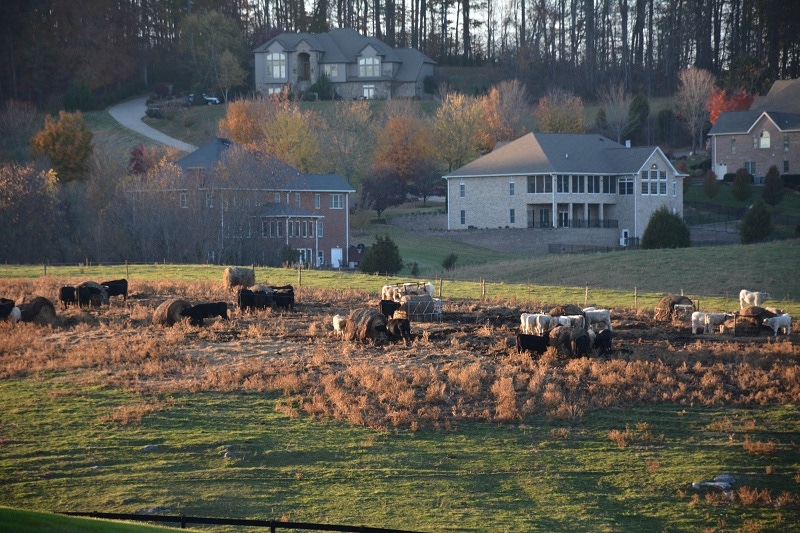
Ask any cattle, pork or poultry producer how they fared in recent years and chances are more than good you will get a negative response. The truth is, with major problems like increased costs for feed, a notable drop in consumption of meat products in recent years, and problems associated with a multiyear drought, producers have taken a beating, resulting in smaller herds and tough times across the industry.
But the silver lining to those dark days may be on the horizon according to economists and a return to a more favorable period for rebuilding may already be getting a kick start thanks to lower grain prices and early signs of increased demand.
In a recent report from Purdue extension economist Chris Hurt, a multi-year trend of less meat consumption in the U.S. is showing some early signs of recovery and as more Americans return to work and the economy slowly improves, it may signal a time for rebuilding herds as market prices indicate improvements for producers.
Hurt says it's no secret times have been tough in recent years. U.S. meat consumption per person in 2007 was 219 pounds for the big four of beef, pork, chicken, and turkey. Current USDA estimates for this year are down to 199 pounds per person, nearly a ten percent decrease over the last seven years. Of that 20 pound reduction, beef was down 11 pounds, pork was down five pounds, and chicken and turkey were down about two pounds each. In percentage terms consumption of beef has been down 17 percent, followed by 10 percent for both pork and turkey and a more modest three percent for chicken.
For the latest on southwest agriculture, please check out Southwest Farm Press Daily and receive the latest news right to your inbox.
Economists say the reason for the drop in demand, while diverse, largely is the result of rising input costs that forced retail prices higher and a sluggish to stale economy that left consumers with less money to spend. As a result, some U.S. consumers became more frugal and careful on where and how to spend their money, many of them making lifestyle changes that included less meat in their diets.
Higher consumer prices
Retail prices of beef and pork in 2014 are about 40 percent higher than in 2007. This rate of increase averages about 5 percent per year, far above the general inflation rate. With many Americans out of a job and with a recession that has required years to turn around, it comes as little surprise that family budgets dictated consumer choices at the grocery store.
But the rapid reduction in U.S. consumption, combined with serious drought conditions, producers have been struggling to keep their heads above water in spite of smaller herds. While not a significant help, a rise in foreign incomes has aided the demand in U.S. beef exports, but the hope for brighter days for the industry require more domestic demand for meat products on the home front, shuffling in what Hurt refers to as the next era for the animal industry, a time for rebuilding herds and flocks. He predicts it will be a multiple-year process and will be characterized as a role reversal for the crops sector and the animal sector.
He says if the years from 2007 to 2013 could be described as the "Grain Era" in which crop sector incomes had an extraordinary run, the coming period may be described as the "Animal Era" when producers of animal products have strong returns.
Hurt says during the "Grain Era," some pasture land and forage production were converted to cash crop production, but in the coming years there will be some incentive to convert cash crop land back to animal industry use. He theorizes the three important causes of declining per capita consumption are shifting from negative to positive drivers. Feed prices are much lower, drought continues to abate in the Southern Plains, and the U.S. economy continues a slow but steady process of bringing more families back into the work force.
Positive Outlook
Hurt suggests animal industries finally have a positive multiple-year outlook. But he warns the favorable income prospects will be based on feed prices re-setting to lower levels, continued reductions in drought affected pastures, and the strengthening of domestic incomes. He hope animal industries will enter a mini-boom phase, led by rising per capita consumption, continued small growth in U.S. population, and growing export demand.
He says an important determining factor on how big the boom will be will depend on where feed prices re-set. He adds that it may not be too early for producers to consider their strategies for brighter days ahead.
About the Author(s)
You May Also Like




